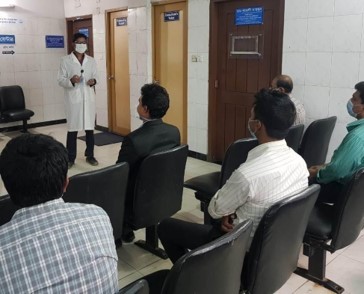- What We Do
- Agriculture and Food Security
- Democracy, Human Rights and Governance
- Economic Growth and Trade
- Education
- Environment and Global Climate Change
- Gender Equality and Women's Empowerment
- Global Health
- Humanitarian Assistance
- Transformation at USAID
- Water and Sanitation
- Working in Crises and Conflict
- U.S. Global Development Lab
Speeches Shim

In Bangladesh, where tuberculosis (TB) remains a challenge, those with diabetes are three times more likely to get infected with TB. Moreover, diabetes increases the risk of TB infection progressing to active TB disease. Limited access to TB and diabetes services hinders diabetics from timely detection and treatment of TB, and the likelihood that a person with TB will die or relapse is significantly higher if the person also has diabetes.
USAID Bangladesh local partner Alliance for Combating TB in Bangladesh (ACTB) has partnered with the Bangladesh Diabetic Association (BADAS) to fight TB-diabetes mellitus (DM) comorbidity. BADAS is a local private organization that has an extensive network of affiliated academies, institutions, doctors, allied health professionals, and countrywide health service delivery points. BADAS is governed by the Bangladesh Institute of Research and Rehabilitation in Diabetes, Endocrine and Metabolic Disorders (BIRDEM) General Hospital, which is the largest hospital for management of diabetes in Bangladesh and caters to hundreds of diabetic patients daily.
BADAS began working with USAID’s ACTB in mid-September. As of December 31, 2020, a total of 56,376 diabetic patients were screened for TB through this network. Among them, 4,684 persons were identified as TB presumptive, and 388 (incidence rate :688/100,000) were diagnosed with TB. The BADAS staff has established a reliable referral mechanism with directly observed therapy (DOT) providers where patients with TB and DM are referred to the nearest DOT center for TB treatment management. This initiative is strengthening the National Tuberculosis Control Programme’s effort to identify missing TB cases in diverse populations, including high-risk groups, such as diabetics.

Comment
Make a general inquiry or suggest an improvement.